The best 8K TVs in 2024: Prepare for the future with these top Ultra-HD models
The best 8K TVs are the peak of current TV technology
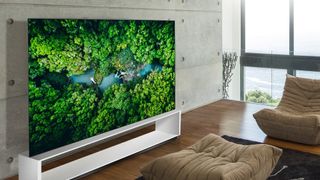
1. The list in brief
2. Best 8K TV
3. Best LG 8K TV
4. Cheapest 8K TV
5. 8K TV FAQs
6. How to choose
7. How we test
The best 8K TVs gift you the absolute best image imaginable for all things entertainment. Expect, however, to be met with a hefty premium when it comes to this type of display, as boosting up from 4K won't come cheap by any means.
While 8K content is a bit scarce as of yet, it's still the perfect time to upgrade your home entertainment setup and futureproof it with a TV built for the next era. Plus, who wouldn't turn down experience gaming on a display that can upscale content to 8K for superior image quality? It's a no brainer.
Following our testing, we've found the Samsung QN900D sets the bar for 8K displays. It brings to the table several key features that make it stand out as a worthy TV even for those who aren't invested in the 8K resolution era. Sitting not too far behind is the LG 99 Series, a Mini-LED TV that brings similar gaming chops and quality sound.
With years of experience under our belts, we know more than enough about TVs and projectors. You can trust us to deliver in sound opinion with budget and premium options that will give any buyer looking to upgrade their setup with the perfect 8K TV. Do expect to invest quite a bit, as you won't find any of the best 8K TVs anywhere under $2,000.
The quick list
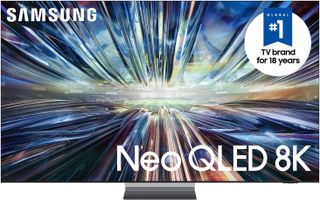
The best 8K TV
With its newly-infused AI chops built on a 144Hz display, the Samsung QN900D is easily the king of 8K TVs right now. It brings ample performance with a hefty price tag, but makes for one of the most enticing gaming TVs with a 144Hz refresh rate and a 10.1ms input latency.
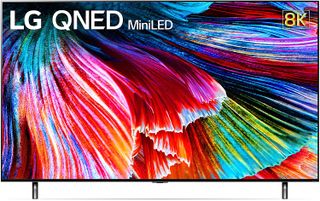
LG's best 8K TV
The LG QNED 99 sports a lot of features and enhancement technologies, but is held back by a couple of technical issues. But if you want to stick to an LG model, the QNED MiniLED 99 Series 8K TV is a perfectly tenable choice.
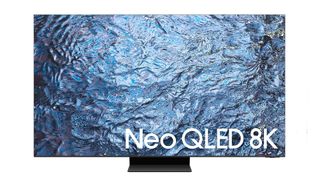
The cheapest 8K TV
In our professional opinions, there's no better 8K TV out there right now than the Samsung QN900C. It's an incredible performer that offers staggering brightness, well-saturated colors and great upscaling.
The full list: Best 8K TVs in detail

Specifications
Reasons to buy
Reasons to avoid
Although there's little in the way of official 8K content around, the Samsung QN900D Neo QLED TV is still a worthy upgrade to futureproof your home entertainment setup. It takes up after last year's QN900C, itself among the best 8K TVs, and pushes the rather niche TV sector into the stratosphere with AI upscaling and loads of extra features.
What made last year's model stand out was its expert gaming chops, which is pulled through onto the QN900D, which leverages a 144Hz refresh rate with support for both FreeSync and G-Sync. A 10.4ms input latency might not pit it among the best gaming TVs, as we'd like that number to be slightly more under the 10ms mark, but it's still demonstrably low enough to be marked as a valiant gaming companion.
No Dolby Vision is a bit of a bummer, though. At least the QN900D has access to HDR10, HDR10+, and HLG for all that HDR goodness, plus it does utilize Dolby Atmos. This comes in handy for those who want to ditch one of the best soundbars in favor stereo sound, as the QN900D's 6.2.4 channel 90W speaker system is more than adequate for most.
There's even more to love with the Samsung QN900D, as it also has plenty of AI built-in for upscaling, audio improvements, and so much more. But that $4,999 price tag for its 65-inch model is certainly an investment.
Read our full Samsung QN900D Neo QLED 8K TV review.
Find out about the Samsung 2024 TV lineup.
Best LG 8K TV
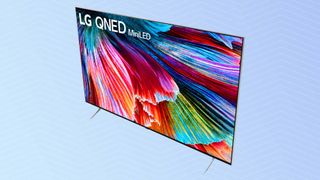
Specifications
Reasons to buy
Reasons to avoid
The LG QNED MiniLED 99 Series 8K TV boasts an awesome feature set, from the inclusion of mini-LED backlight to the union of NanoCell and QLED technologies. We were impressed by the brightness and great color accuracy, and the screen size options are ideal for the higher resolution. With webOS 6.0 offering the best smart features available for LG TVs and 8K upscaling allowing 4K and even 1080p content to be enjoyed on the ultra HD screen, it's one of the first 8K TVs we've seen that we recommend… sort of.
For everything the LG QNED MiniLED 99 Series 8K TV offers, it’s still a tough sell, largely because 8K content is still pretty much non-existent. That, more than anything else — like the sluggish controls or inconsistencies in upscaling quality — gives us pause in recommending the set, even if it's one of the most affordable 8K sets we've seen.
Read our full LG QNED MiniLED 99 Series 8K TV review.
Cheapest 8K TV
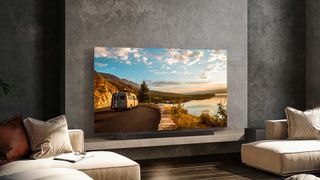
Specifications
Reasons to buy
Reasons to avoid
Samsung's flagship 8K QLED TV is easily the best 8K TV right now. It's stacked with all the latest and greatest futures and it looks like a dream. While other manufacturers have shied away from 8K, Samsung's flagship TV leans into it and delivers a TV that is eye-catchingly beautiful and, while expensive, delivers incredible performance.
According to our reviewer, Stephen Lambrechts, the Samsung QN900C uses a killer specs sheet to power the 8K experience. There's a full battery of HDMI 2.1 ports that can accept 8K/60 or 4K/120 signal from consoles like the Xbox Series X and PS5, and a highly immersive 6.2.4-channel speaker system with Samsung's Object Tracking Sound Pro tech in tow.
In our lab tests, the Samsung QN900C recorded a 9.2ms of input lag (better than most of the competition) and a Delta E of 2.8686 right out of the box. You'll need to do a bit of tweaking to get perfect color accuracy, but few TVs come out of the box as calibrated as Samsung's QN900C. Brightness and color saturation measured in at 2,433.6 nits and 93.04% of the UHDA-P3 color gamut, respectively, cementing the QN900C as one of the top performers in the category.
It will soon be superseded by the new Samsung QN900D, but until we can put that through our rigorous testing process, the QN900C will remain our top choice.
Read our full Samsung QN900C Neo QLED 8K TV review.
8K TV FAQs
What is 8K resolution?
8K resolution is shorthand for 7680 x 4320 resolution. That's equivalent to four 4K panels, tiled in a 2x2 formation.
But the real magic of 8K is hard to convey in words or pictures online. The jump in resolution from 4K to 8K is magnified by the fact that 8K screens are significantly larger than a standard 4K TV. So you not only get incredible lifelike levels of detail, but often at life-like sizes.
That combination of detail and size does deliver some astonishingly realistic images, and the potential for truly immersive 8K entertainment is undeniable. On top of this, TV manufacturers aren't pulling their punches when it comes to 8K TVs. Even the less expensive 8K models are packed with premium features, so you can expect 8K TVs to boast the best audio options and smart capabilities available.
How much do 8K TVs cost?
The price of 8K TVs is coming down rapidly, especially in screen sizes that will fit in the average home. Affordable 65-inch models can now be found for under $2,000, making them more affordable than some premium 4K sets. But larger sizes cost more, between $3,000 and $5,000, and the higher end models still sell for tens of thousands of dollars for giant OLED displays and other premium features.
Are 8K TVs worth buying?
It depends on what you want from them. If you want native 8K content, then no. There are no 8K movies being released, no shows streaming in 8K, there is no 8K version of Blu-ray, and there is very little on the horizon that will use the 8K format because there are still almost no 8K cameras or production tools made to handle the higher resolution.
If you want very well-upscaled 4K content that looks incredibly on a larger, crisper screen, then absolutely you should
How to choose the best 8K TV for you
While the above list can tell which TV is the best based on empirical data, that TV might not be right for you because of the screen size, the screen brightness, the sound output, the resolution and/or the supported HDR formats.
We have extensive shopping advice, like our TV buying guide and figuring out what size TV you should buy. And if you still have questions about smart TV features and capabilities, check out Smart TVs: Everything you need to know.
Need a quick tutorial on TV technology? Here's a short primer.
Screen sizes: This is probably the best place to start when buying a TV. If you plan on wall-mounting the TV, measure the dimensions of the wall space you want to fill. Having the length, width and diagonal measurement will quickly and easily eliminate 80% of the TVs on the market. If you plan on putting it in a cabinet or on a stand, measure the width of where the TV will sit, and use that to start shopping.
Brightness: The common wisdom for buying a TV is that, the brighter the room is, the brighter of a TV you'll want to buy. Why? Well, ambient light can wash out color saturation or, worse, lead to glare on the screen. Ultimately the amount of glare will depend on what type of TV you buy (OLED TVs with a glass screen are more reflective than, say, QLED TVs with an anti-glare screen), but a good rule of thumb is that OLED TVs are usually better in light-controlled rooms while bright LED-LCD TVs work better in brighter rooms with more ambient light.
Refresh Rate: If you've ever looked at a TV box, you'll probably see some weird marketing terms like Motion Rate 240 or 480, or something ridiculous. These don't mean anything. Well, they do, sort of - but it's purposely obfuscated. All TVs available right now have one of two native panel refresh rates: 60Hz or 120Hz. These numbers tell you how quickly a TV scans and replaces each pixel in a second. 60Hz is 60 times in one second. 120Hz is 120 times in one second. You want a higher number if you want smoother motion (i.e. you plan on watching sports or playing games).
Ports: We generally recommend opting for more ports, so that you never have to manually unplug and re-plug HDMI cables to switch from your streaming device or Blu-ray player to your game console or other device. Three ports is common, but nicer TVs usually have 4 HDMI ports. You'll also want make sure at least one is HDMI 2.1; our guide to the best HDMI 2.1 TVs can help here. (Still confused? Check out TV ports explained: What all those HDMI, USB and other connections are for?)
Smart software: Almost all TVs are smart TVs these days. That means they come stocked with some sort of smart platform, whether it's Roku TV, Google TV, WebOS, Tizen or something else. Each one has its own strengths and weaknesses, so be sure to familiarize yourself with them before you buy. Some of the TVs are among the best Alexa compatible devices and best Google Home compatible devices you can own, so pay attention to which smart home platform the sets offer before choosing.
Price: Lastly, you'll need to factor price into the equation. For the most part, unfortunately, better TVs do cost more. Just like PCs, TVs that are more expensive come with better specs and more features, so typically paying less for a TV means making some sort of sacrifice. (See: Samsung QN800A.)
How we test the best 8K TVs
How we test TVs
Why you can trust Tom's Guide
Evaluating TVs is about more than just kicking back to watch a movie. We lab test every TV, measuring color gamut, color accuracy and brightness to objectively see which sets are the best for these key indicators. We also test for lag time – a key detail for gaming – measuring to the millisecond how long it takes for content to travel from the original source to the screen. We use these results to make numbers-based comparisons about color and display quality.
We also spend time with each set for real-world evaluation and see how our lab results translate into more subjective performance. We also compare sets side by side and view samples from the latest movies, specialized test patterns that highlight strengths and weaknesses of each display, and a range of content across several sources. With that information, we can tell you which TVs look best, sound best and offer the best viewing experience.
Finally, we evaluate the smart TV functions and apps for each TV, looking at everything from the remote control design to the voice interaction.
We put all of that data together with our real-world testing and stack it against the price of the TV. The result is a score that we feel best represents the totality of that model, and how well it stands up against its contemporary rivals. A TV that scored highly five years ago may not score as highly against a newer model, but we do our best to update reviews when newer models become available.
If you've narrowed down your TV shopping by brand, price range or screen size, check out our picks for the best TVs in each.
Best TVs | Best 4K TVs | Best smart TVs for streaming | Best TVs for gaming
The best TVs under $1000 | The best TVs under $500
Best TV brands | Best Samsung TVs | Best TCL TVs | Best LG TVs | Best Vizio TVs | Best Roku TVs | Best Google TVs | Best OLED TVs | Best QLED TVs | Best 8K TVs | Best HDMI 2.1 TV | Best TVs with ATSC 3.0 | Best TVs with Chromecast
The smallest smart TVs | Best 43-inch TVs | Best 50-inch TVs | Best 55-inch TVs | Best 65-inch TVs | Best 70-inch TVs | Best 75-inch TVs | Best 85-inch TVs
Get the top Amazon Prime Day deals right in your inbox: Sign up now!
Receive the hottest deals and product recommendations alongside the biggest tech news from the Tom's Guide team straight to your inbox!

Nick Pino heads up the TV and AV verticals at Tom's Guide and covers everything from OLED TVs to the latest wireless headphones. He was formerly the Senior Editor, TV and AV at TechRadar (Tom's Guide's sister site) and has previously written for GamesRadar, Official Xbox Magazine, PC Gamer and other outlets over the last decade. Not sure which TV you should buy? Drop him an email or tweet him on Twitter and he can help you out.